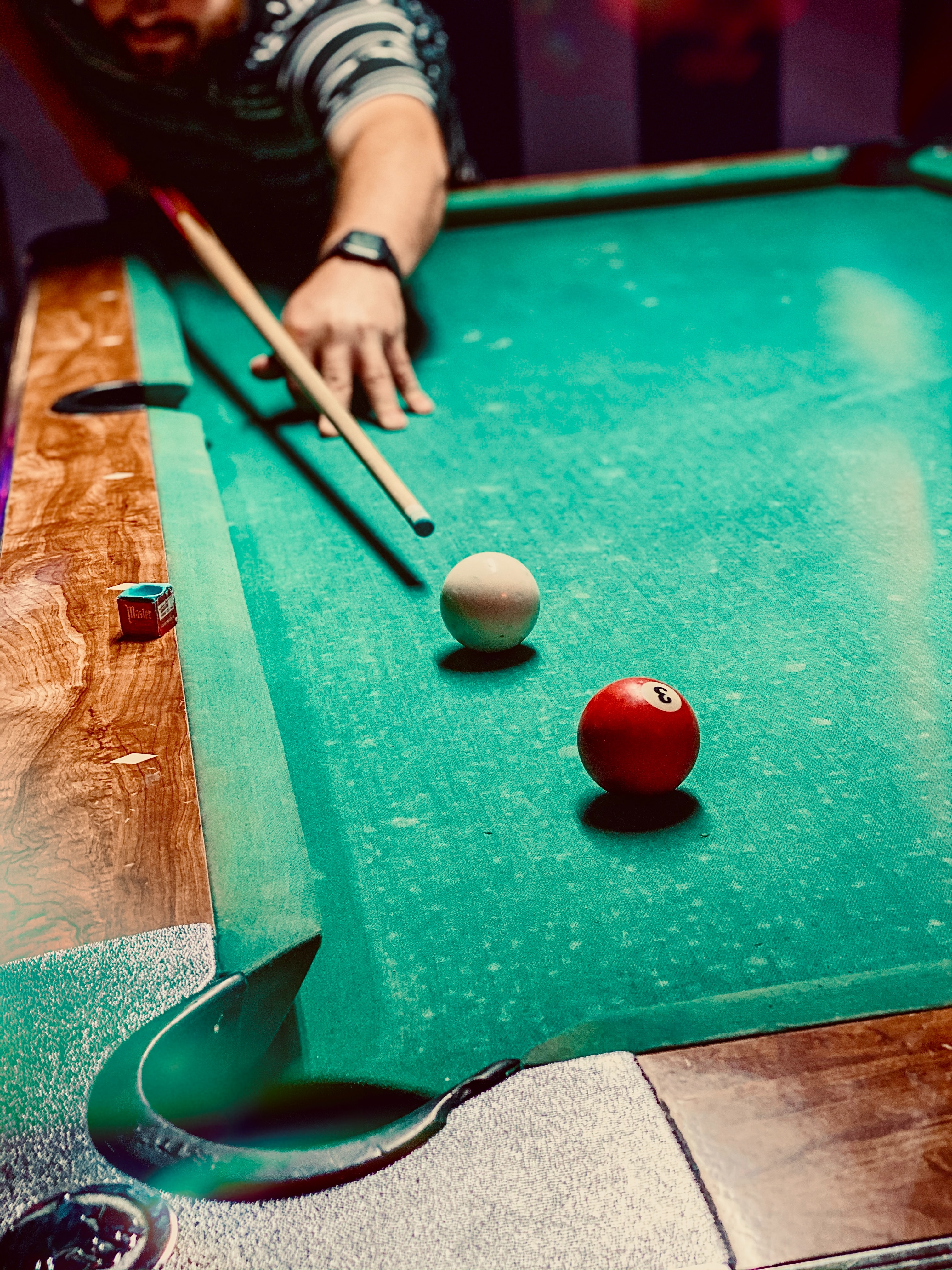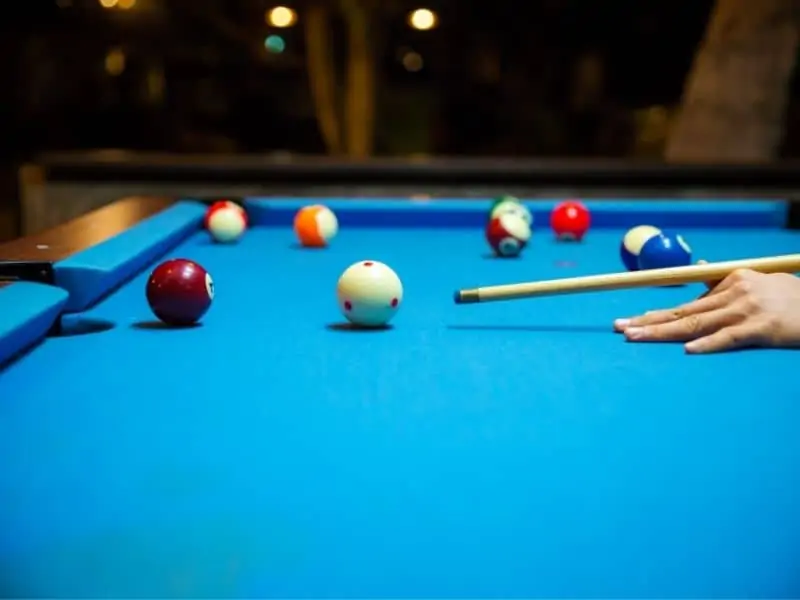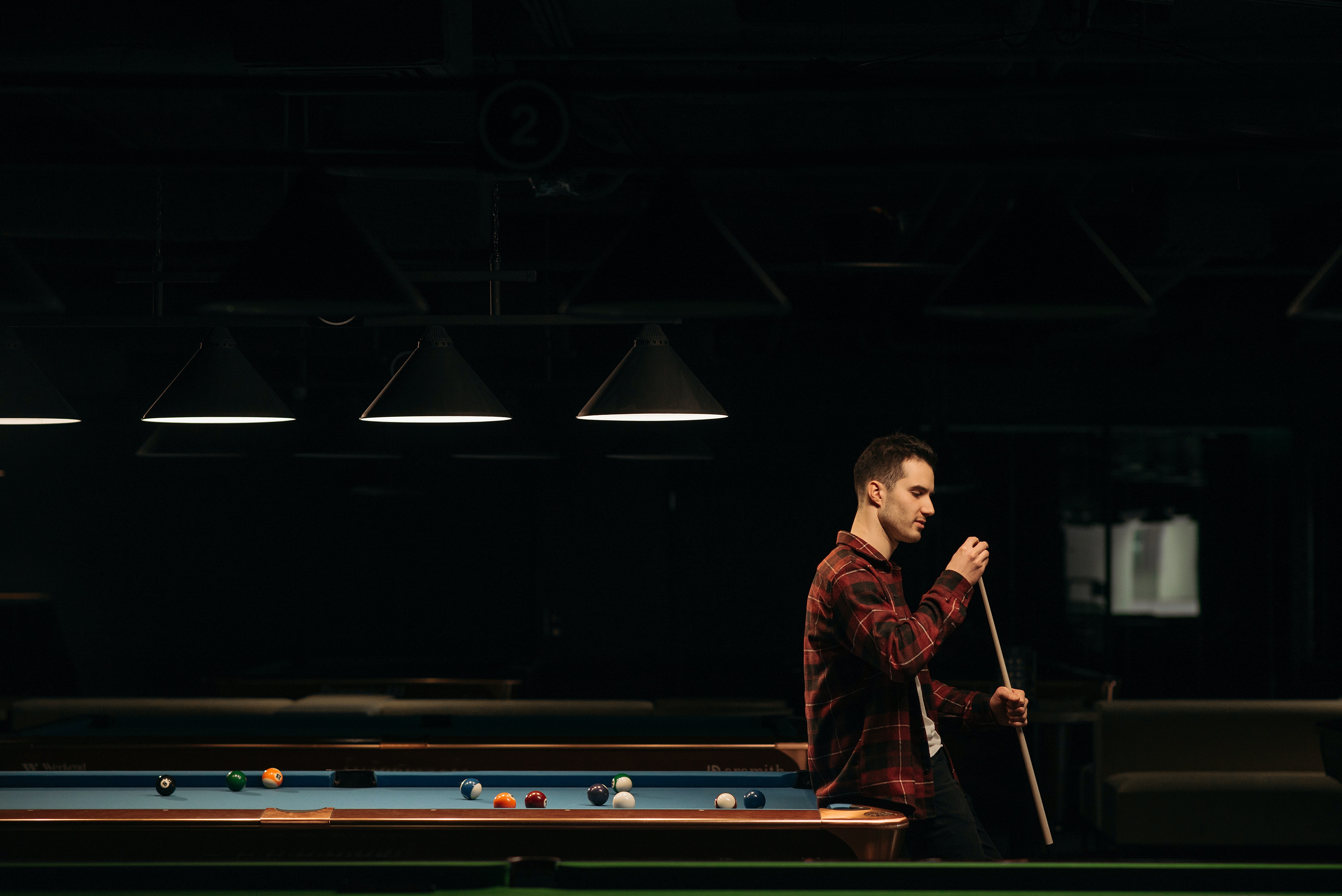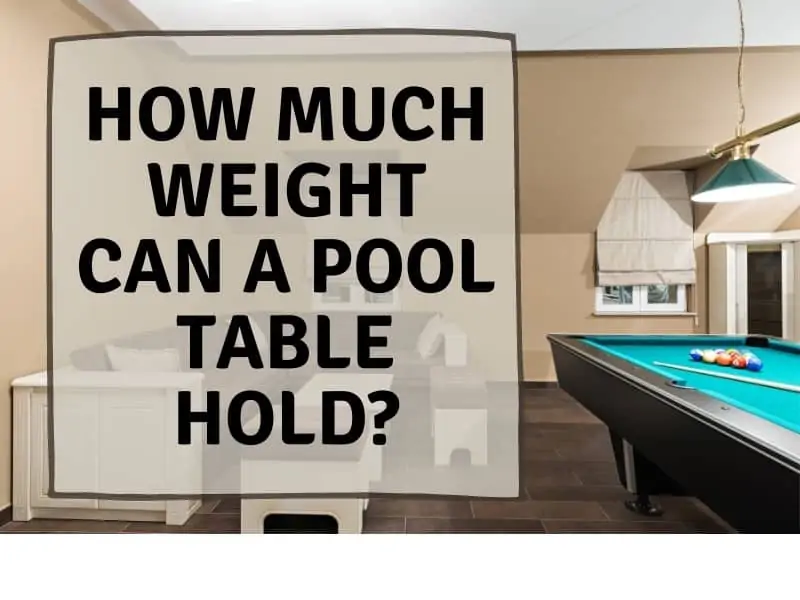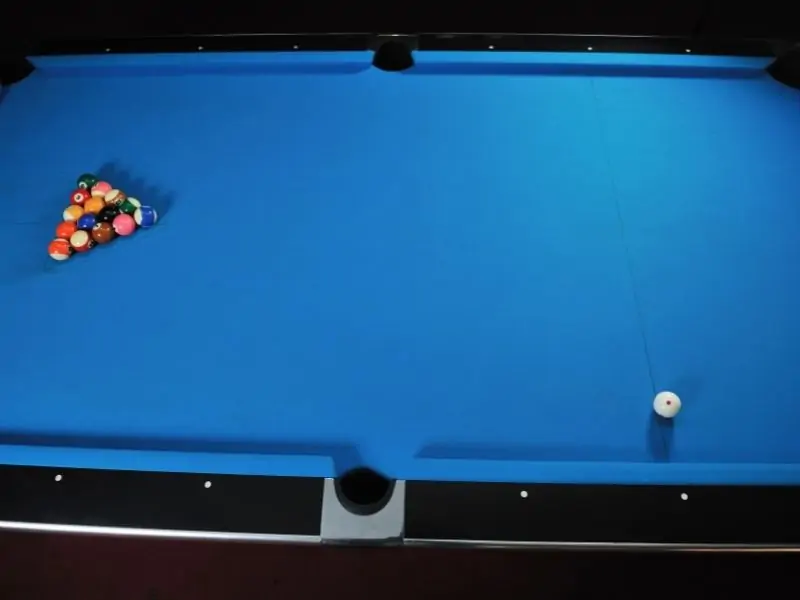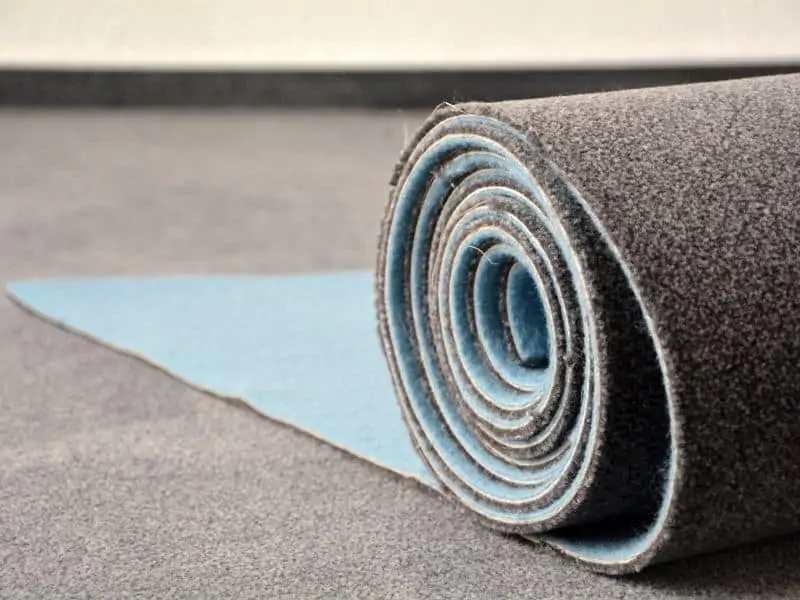If you’re thinking about purchasing a pool table, or you already own one and are planning to move to a new home, you may be concerned with climate control. There are plenty of horror stories out there about pool tables warping or falling apart when not properly cared for. Other stories suggest that a pool table will be fine when left exposed to the element. Which stories are true? Do pool tables need to be climate controlled?
For best results, pool tables do need to be climate controlled. A pool table in a climate-controlled area will last longer and play better than a table left to the elements. Luckily, it’s fairly easy to add climate control to an unfinished basement or a garage so you can play your heart out.
Different Types of Pool Tables
Before we go further in this article, I think it’s important to talk about the different types of pool tables. Slate tables (which is what we’ll be talking about throughout this article) are the most common tables out there. They’re considered the best tables, too. However, there are other types of tables that have their own considerations when it comes to climate control.
MDF or Non-Slate Tables
There are many different kinds of MDF (medium-density fiberboard/) tables on the market. MDF, along with most other non-slate tables, are very susceptible to warping when placed in a non-climate-controlled room. If you have a non-slate table, you should keep it in a climate-controlled room if you want to keep it in playable condition.
Outdoor Tables
Essentially the opposite of MDF tables, outdoor pool tables are designed to hold up to the great outdoors. They are made with special materials that will not be affected by the elements. However, these tables do not play like regular slate tables. The balls behave differently on outdoor tables than they do on regular tables, mostly because of the different types of cloth used.
So, if you want to get an outdoor table, don’t expect it to play like the table at the bar or pool hall. Still, they’re great if you want to put the table in your pool or keep it out in the open just to have some fun.
Now, the rest of this article will concern slate pool tables unless otherwise mentioned.
Where You Live
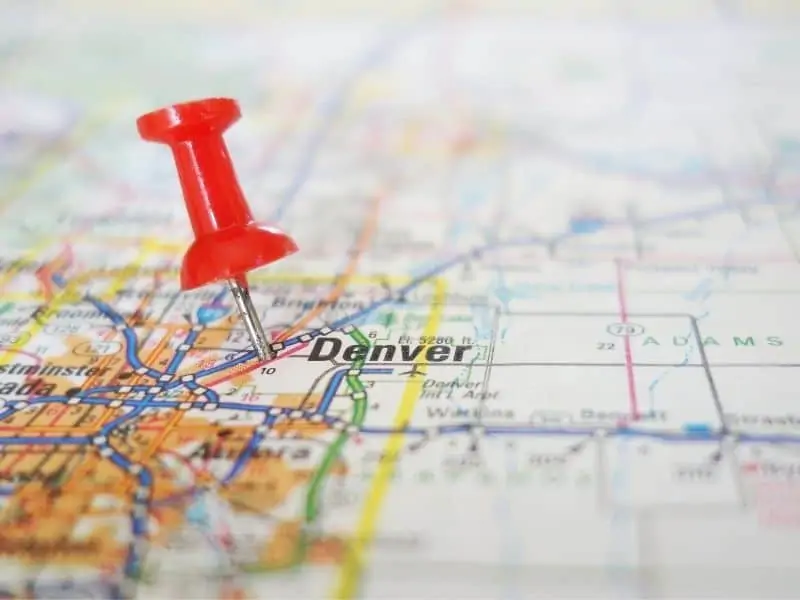
One of the biggest factors influencing whether you need a climate-controlled room for your pool table is where you live. Humidity is a pool table’s worst enemy, so if you live in an area that has high humidity, you’ll definitely want a climate-controlled area for your table.
However, if you live in a temperate climate that’s not too humid and doesn’t have extreme temperature changes, you can probably get away with keeping your table in a garage, an unfinished basement, or even outside under an awning. Unfortunately, there aren’t many places like this.
And, although a pool table in a temperate climate will probably not run into any serious issues, it will still lessen the lifespan of the table. This is unavoidable when any kind of pool table is exposed to the elements for a long time. But, it’s not something that will be very noticeable until a few decades have gone by.
How The Elements Affect Pool Tables
Now, you may be wondering what exactly is likely to happen to your pool table if kept in a non-climate-controlled room. Here’s a list of the major parts of the pool table and how they’re each affected by exposure to moisture and extreme temperatures.
Felt
Pool table felt, also known as billiard cloth, is usually the first thing to become affected by the elements. Moisture, humidity, and heat are all liable to help wear down the felt quicker than it otherwise would. This is relatively easy to fix since felt is designed to be replaced from time to time anyway. But still, costing an average of $250 for professional re-felting is a little steep for some.
Felt tends to soak up moisture, which not only causes it to wear down quickly but also affects how the balls move on the table. (More on that later).
Bumpers
Most quality bumpers, or cushions, are made with quality gum rubber. These pieces of rubber are then covered with felt. They play a large role in consistent ball movement on the pool table. But even the best rubber bumpers are susceptible to extreme temperatures.
Heat causes the rubber to expand and cold causes it to contract. After enough of this, whether by heat or cold or both, the rubber starts to get brittle and loses its bounce. At which point you can either deal with the new dynamic or you can replace the bumpers. But, again, this isn’t the cheapest thing to do. It usually costs between $80 and $120, not including the cost of the new cushions.
Rails, Legs, and Frame
Next up comes the rails, legs, and frame. In short, the wood of the pool table. Not all pool tables are made of wood, but the great majority of them are. Typically there is some mixture of wood and engineered wood products in a pool table.
It’s not hard to imagine how the wood of a pool table will be affected when exposed to moisture. Even treated wood will eventually begin to expand when exposed to enough moisture. Luckily, most quality pool tables will not be drastically affected by this. Unless the humidity in the air is near-constant, the playability of the table should not be affected for some time. However, humidity in the wood will affect the longevity of the table.
Pockets
Many pool tables have leather or imitation leather drop pockets. While leather is very durable, it can start to get brittle with enough exposure to extreme temperatures and humidity. This will usually take years to become noticeable, but it’s still something to consider if you don’t have a climate-controlled room.
Slate
Finally, we have the slate of the pool table. Slate is a type of rock that won’t warp with humidity like the playing surfaces of non-slate tables will. This is one reason why slate tables are so popular; they remain true even when exposed to humidity and extreme temperatures.
But, slate has also been known to “sweat” under the right circumstances. This usually happens when the pool table (or the room it is in) is heated quickly, either from sunlight or artificial means like a heater. When the slate “sweats” it doesn’t actually damage the pool table, it just affects gameplay, which is what we’ll go over next.
How Climate Affects Play
The biggest way climate affects play is through moisture on the table. When the felt has moisture in it, the balls tend to roll slower, meaning you need more power for a shot than you’re used to. This is the biggest complaint among those who keep their pool tables in non-climate-controlled areas.
Moisture in the air can also mess with the way you shoot. It can cause the cue to stick to your bridge hand, making easy shots difficult. You can always fix this with a billiard glove if you have one.
When the pool table gets too cold, the balls may move fast across the felt, but the cushions will be contracted enough so as not to supply as much bounce as you may be used to.
Lastly, the climate can also make an otherwise fun game miserable. If it’s too hot, too humid, or too cold as you’re shooting, it can take all the fun out of it. If you are sweating, sticky, or shivering, you may start to wonder why you’re not in a climate-controlled room yourself.
How to Make An Area Suitable For a Pool Table
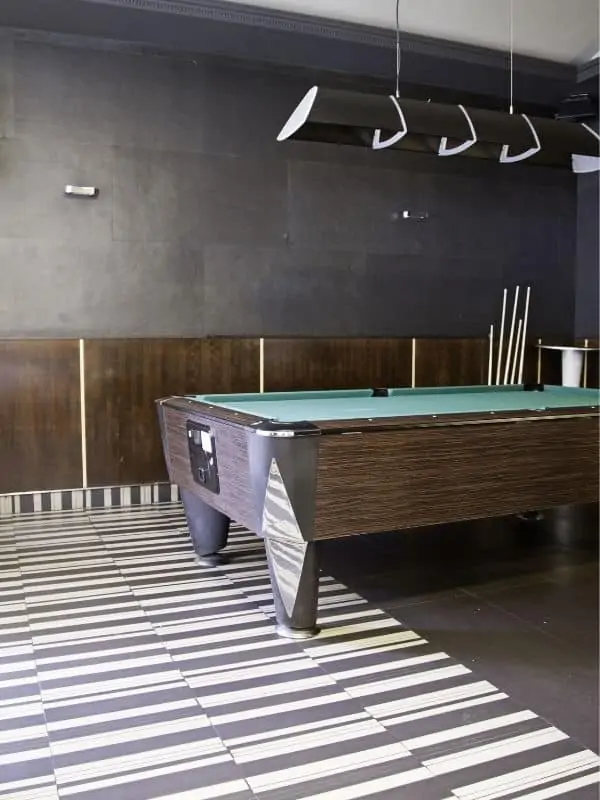
I said at the beginning of this article that it’s fairly easy to control the climate, but there’s a bit of a caveat to that: you need four walls and a roof. If you’re planning on keeping your pool table under an awning or out under the great blue skies, there’s nothing much you can do to protect the table from the elements.
Insulation, Humidity, and Temperature Control
But, if you’re putting the table in a garage or an unfinished basement, or someplace similar, you have options. For those areas where you have extreme temperatures and humidity, your best bet is to purchase an all-in-one heater and AC with humidity control.
To only deal with humidity, you can simply purchase a dehumidifier for the room. You don’t have to run it all the time, just those days when the humidity is high.
Otherwise, to deal with heat, get a portable AC unit, and a portable heater to deal with the cold. You can also purchase insulation for the walls (or the garage door) for a fairly low price to help keep the extreme temperatures outside.
Lastly, although this is fairly obvious, it’s always good to use a pool table cover when the table is not in use.Check out this article for everything you need to know about putting a pool table in a garage.
I hope this article helps you decide where best to put your pool table or whether to purchase one at all!




